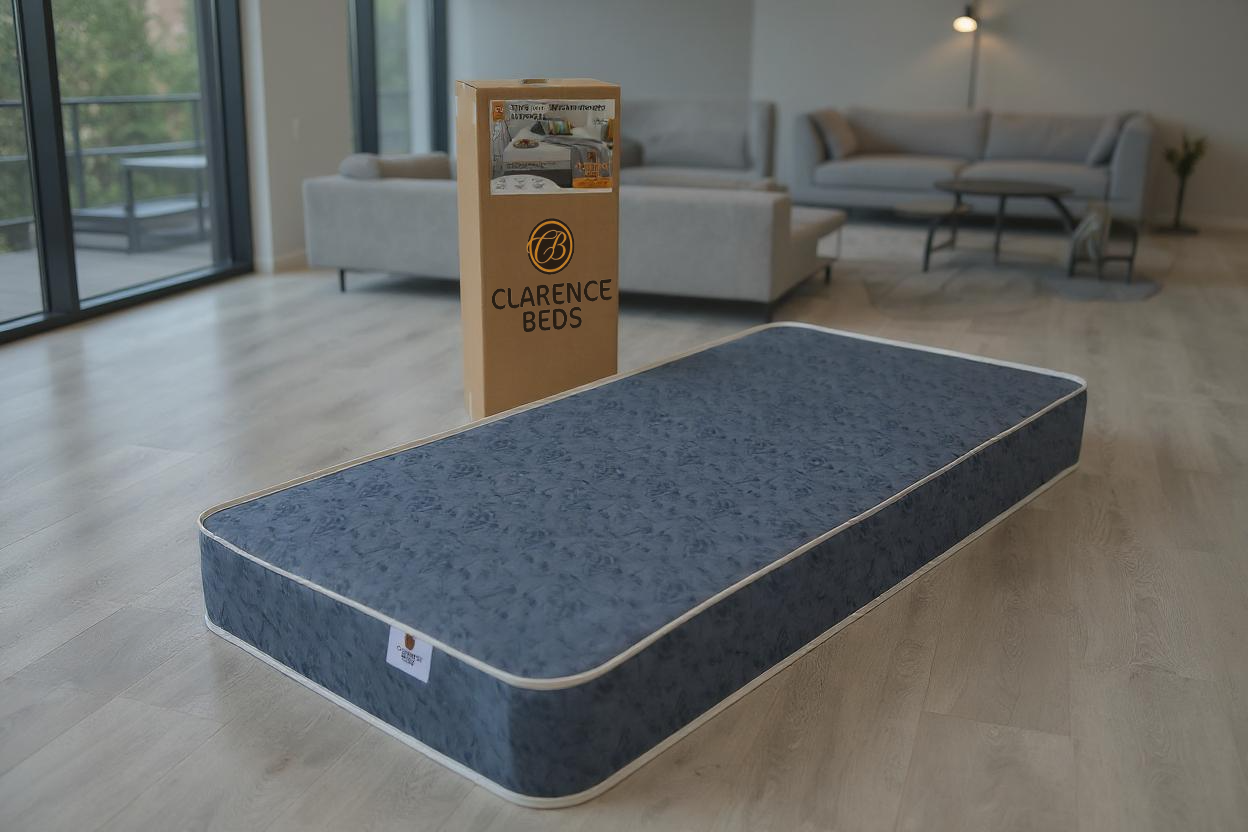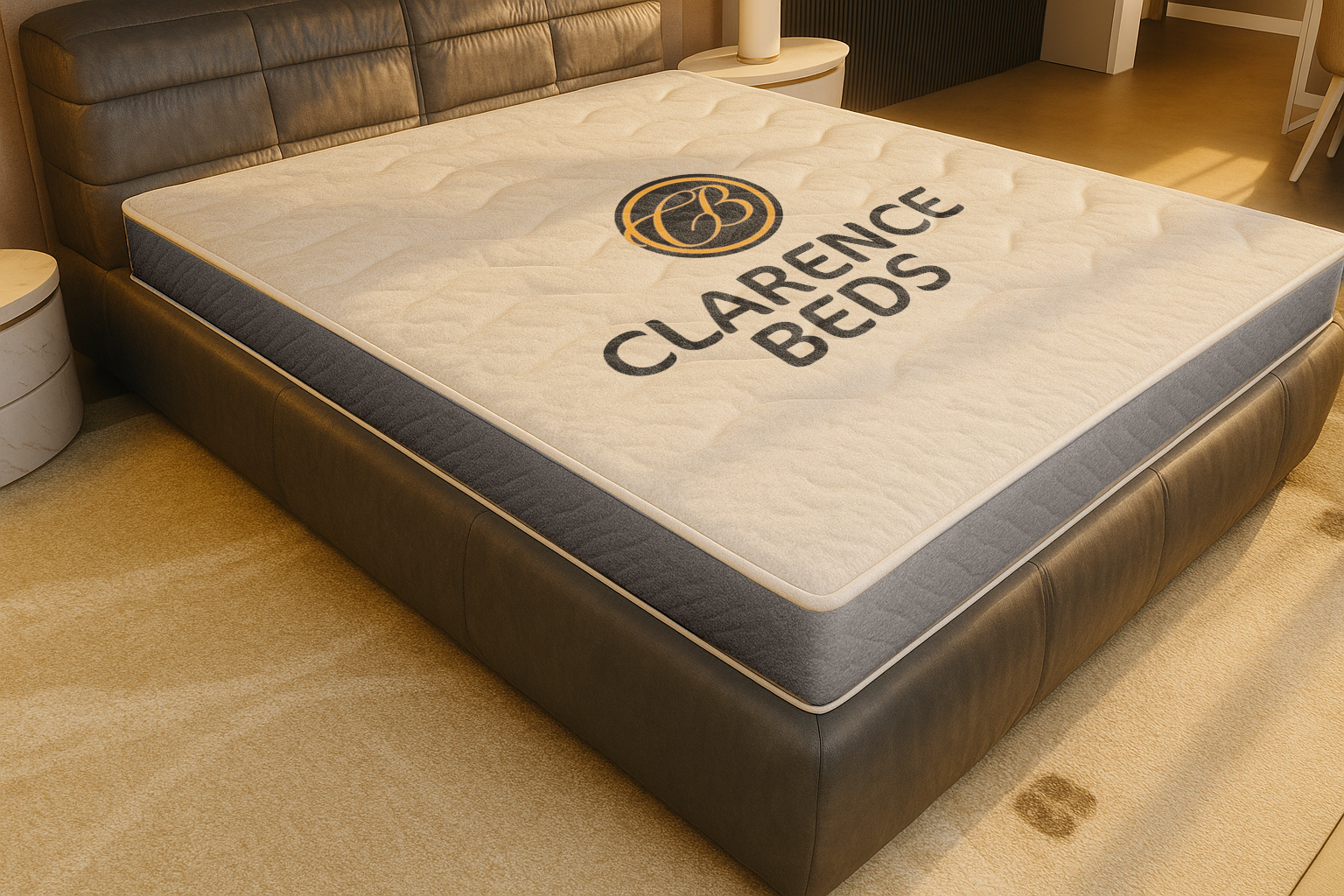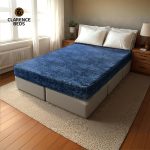- Best Quality Beds & Mattresess At Affordable Price!


A supportive and comfortable mattress is essential for achieving a restful night’s sleep and maintaining overall well-being. Over time, however, not all mattresses retain their original quality and comfort. Recognising the early signs of a deteriorating or failing mattress can help you address issues before they lead to ongoing discomfort, disrupted sleep, or potential health problems such as back pain or allergies. Taking timely action can improve your sleep quality and prolong the lifespan of your mattress. This blog post will explore the common signs of a failing mattress, the effects it can have on your health and sleep, and tips on how to select and maintain a mattress that supports your health and comfort.
Sleep is a fundamental part of health, equally as crucial as diet and exercise. A critical element of good sleep hygiene is choosing the right mattress. Although it may seem like a minor detail, the quality of your mattress has a significant impact on your sleep and overall well-being. A mattress doesn’t deteriorate suddenly; it gives signals that it’s time for a new one. Below are some key signs that your mattress may need to be replaced.
If your mattress still smells bad after cleaning the surface, it means bacteria are hiding underneath. These smells often originate from spills of liquids such as milk, tea, or coffee, as well as dirt and urine. If the smell persists, it may also be caused by allergens and dust mites, which can impact your health and sleep. When the scent is trapped between layers that do not allow air to pass through, it’s very hard to remove. The best way to clean it is to use a good water vacuum and a strong enzymatic cleaner to eliminate the odour.
Lumps and bumps on a mattress are usually easy to see, but sometimes they are only noticeable when you lie down. These issues are often caused by broken springs or layers, such as foam and fibre, shifting inside. Over time, these can create permanent dents that make sleeping uncomfortable. While these problems can’t be fixed permanently, adding a thick, high-quality mattress topper can provide temporary relief. The topper makes sleeping more comfortable and helps reduce pressure points that cause discomfort.
When your mattress sags in the middle, it means the support core is no longer functioning correctly. This is common with open coil mattresses because their springs can wear out together. Even good-quality pocket spring mattresses can sag over time. A sagging mattress causes you to roll towards the centre during sleep, which can disrupt your rest and lead to back pain. When sagging becomes severe, it’s best to replace the mattress to maintain proper spinal support and promote overall health.
If your mattress no longer feels firm along the edges, it means the edge support has worn out. Sitting on the edges many times can cause this to happen faster, which is why soft spots may appear. Good mattresses typically feature special supports, such as wire frames, to maintain the strength of their edges. However, over time, these supports can weaken and cause the mattress to break down.
A squeaky mattress is typical, especially in spring mattresses like open coil types. The springs make noise while rubbing against each other when you move. Cheap, new open coil mattresses often squeak, but more expensive ones can also develop this problem as they age and wear out.
A good mattress supports your spine and keeps it aligned while you sleep. If you wake up stiff or sore, your mattress might not be providing enough support. The comfort layers should hug your body, and the support core should keep you stable without sinking too much.
If you wake up with aches, it could mean your mattress no longer supports you well. Worn-out comfort layers can cause pressure points and discomfort. If you feel pressure or sink in certain spots, it may be time for a new mattress.
Temperature regulation affects sleep quality. Coil mattresses typically remain cooler, while foam mattresses can trap heat, making it more challenging to sleep comfortably. Over time, foam layers soften, causing increased sinking and reduced airflow, which can disrupt sleep.
Old mattresses can hold allergens like pet dander, mould, and dust mites. If you have allergies, a worn mattress might be the cause. Using a breathable base and a washable protector can help reduce these allergens.
Mattresses gather dead skin cells, which attract dust mites that may lead to allergies, sneezing, and other issues. Innerspring mattresses have more crevices for mites, while latex and foam beds have fewer. Vacuuming and using protectors help control mites.
All mattresses wear out over time. Factors like poor care, weight, and bed base can shorten a mattress’s life. When a mattress is over 6 or 8 years old or shows signs of wear, it’s time to replace it.
If you sleep better on a hotel bed than on your own, your mattress might not meet your needs. Wanting a nicer, more comfortable bed suggests it’s time for a new mattress.


A low-quality mattress can lead to or worsen various health problems. It may cause back and neck pain, as well as other musculoskeletal issues, due to insufficient support or a misaligned spine. Furthermore, an inadequate mattress can result in poor sleep quality, which is associated with many health concerns, such as:
Memory & Concentration Problems: Poor sleep makes it hard to remember and focus because your brain struggles to process and store information.
Weakened Immune System: Insufficient sleep can disrupt your hormones, leading to increased appetite and cravings for unhealthy foods. Sleep helps your body repair itself and fight off illnesses, so without it, your immune system becomes weakened.
Obesity: Lack of sleep can cause you to eat more and gain weight by changing how your body handles fat. Over time, this can contribute to obesity and health issues, so it’s important to stay mindful and take steps to maintain your well-being.
High Blood Pressure: Poor sleep can raise your blood pressure by increasing stress hormones. This puts extra strain on your heart and blood vessels.
Diabetes: Not sleeping enough can mess up blood sugar control, raising the risk of developing type 2 diabetes.
Heart Problems: Getting enough sleep is crucial for your heart’s health. Sleep deprivation can lead to heart diseases, attacks, and strokes by causing inflammation and high blood pressure.
Mattresses typically wear out after several years, with most lasting between 7 and 10 years, depending on how they are cared for. More durable materials, such as dense foams, natural latex, thicker coils, or higher coil counts, support weight better and maintain their shape longer. Latex mattresses are the most durable, lasting about 8 to 10 years, and some even longer. Innerspring mattresses typically last between 6 and 7 years. Their lifespan and performance are significantly affected by the materials and durability used in their construction.
Some mattresses last longer than others. Natural latex is very durable and often lasts the longest. Low-quality innerspring mattresses can sag after a few years. Foam mattresses may soften and leave permanent dents; however, hybrid mattresses, which combine comfortable layers with sturdy coils, often last longer. Factors such as quality, frequency of use, and proper care all affect their lifespan. Using mattress protectors and cleaning them regularly can help them last longer.
Mattresses wear out gradually, making it difficult to determine when they need to be replaced. If your mattress is over 6 to 8 years old or shows signs of wear, it’s time to consider replacing it. Replacing it can improve your sleep quality and help preserve your overall spine health.
A mattress’s support level and its ability to hold weight affect how long it lasts. Lighter individuals and those who sleep on the mattress occasionally tend to wear it out more slowly. Using the mattress daily accelerates its wear and tear. For regular beds, opt for durable materials. For guest beds, lighter materials may be okay.
A new mattress can be expensive. It’s best to replace a worn-out mattress quickly, but sometimes you can make minor fixes until you can afford a new one. If your mattress sags, try turning it 180 degrees or flipping it so you sleep on a different side. You might consider adding a mattress topper for extra comfort, or perhaps explore other ways to make your sleeping space even cosier and firmer. Keep in mind that these are only temporary fixes, as a damaged mattress can’t be fully repaired. A cosy and supportive mattress really makes a difference for a restful night’s sleep. Also, check if your mattress is still under warranty to see if you can get a replacement.
Sleeping on a comfortable mattress promotes better sleep, which is crucial for your overall health and mood. To feel good every day, it’s important to get enough quality restful sleep. Choosing a high-quality mattress is key because the right one helps you sleep better. Recognising the signs of a poor mattress and understanding its effects are key steps to improving sleep quality and health. Addressing these issues promptly can lead to improved sleep, reduced discomfort, and increased energy each day.










| Feet & inches | Common reference | Measurement in Centimetres | |
| Width (cm) | Length (cm) | ||
| 2FT6 | Short Single | 75 | 175 |
| 2FT6 | Small Single | 75 | 190 |
| 3FT | Single | 90 | 190 |
| 4FT | Small Double | 120 | 190 |
| 4FT6 | Double | 135 | 190 |
| 5FT | King | 150 | 200 |
| 6FT | Super King | 180 | 200 |
| Please note: measurements are close approximations only | |||